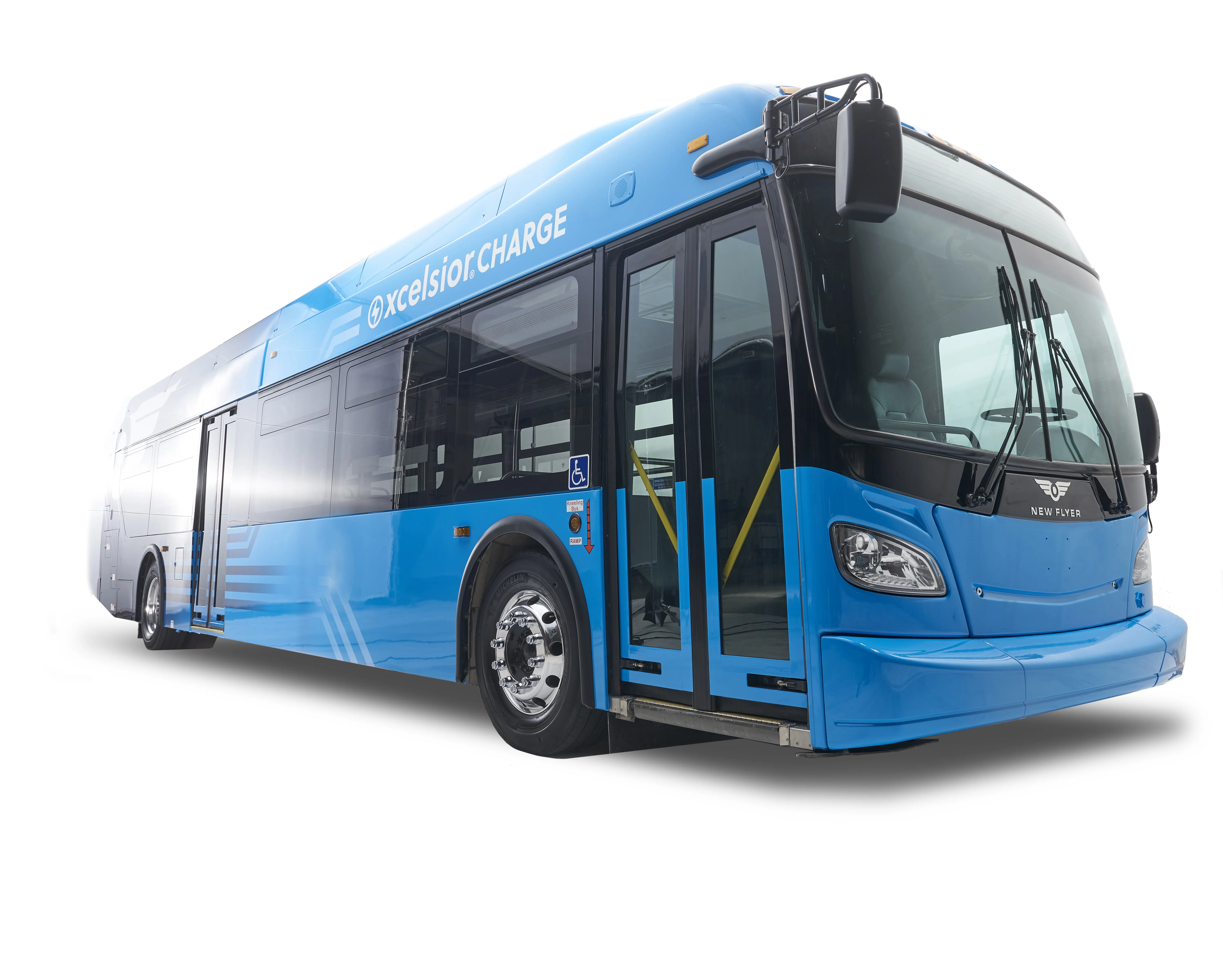Europe will emerge as the most competitive regional market for hybrid and electric medium-heavy trucks and buses, globally, according to Frost & Sullivan. This will be particularly true for the transit bus segment, which is expected to experience proliferation of competitors, both on the original equipment manufacturer (OEM) and supplier side. Strategic Analysis of the Medium- to Heavy-duty Hybrid and Electric Commercial Vehicle Market in EMEA Region, from Frost & Sullivan, estimates that nearly seven per c
August 14, 2012
Read time: 3 mins
Europe will emerge as the most competitive regional market for hybrid and electric medium-heavy trucks and buses, globally, according to Frost & Sullivan. This will be particularly true for the transit bus segment, which is expected to experience proliferation of competitors, both on the original equipment manufacturer (OEM) and supplier side.
Strategic Analysis of the Medium- to Heavy-duty Hybrid and Electric Commercial Vehicle Market in EMEA Region, from Frost & Sullivan, estimates that nearly seven per cent of all medium-heavy commercial vehicles manufactured globally in 2020 will have hybrid/electric powertrain systems in them.
“Energy price volatility, energy independence, and rising consumer demand for green technologies, coupled with OEM and supplier activities in developing hybrid/electric commercial vehicles (CVs) are creating a foundation for sustainable growth and development,” notes Frost & Sullivan industry analyst Bharani Lakshminarasimhan. “In fact, of all alternative powertrain technologies, hybrid technology places the least pressure on existing infrastructure.”
Hybrid and electric medium-heavy truck and bus production is set to reach 45, 000 in Europe, Middle East and Africa (EMEA) by 2020. Parallel hybrids are, meanwhile, set to account for over half of all commercially manufactured medium-heavy hybrid and electric commercial vehicles.
This will underline the need to develop innovative products, technologies and supply chains that will reduce both upfront and lifecycle costs associated with these vehicles, which, at the moment, are perceived as prohibitive by many potential customers. OEMs and suppliers are working, both independently and synergistically, through a combination of vertical and virtual integration, to support growth momentum in this rapidly evolving market.
“The biggest challenge in the market currently is the high upfront cost of technology and the inability of hybrid/electrics to support a wide range of CV duty cycles, especially long-haul freight movement,” says Lakshminarasimhan. “Nascent battery technology and competing emerging technologies such as liquefied petroleum gas and compressed natural gas (LPG/CNG)-powered CVs are impeding faster market penetration of hybrid and electric CVs.”
Product differentiation is vital for OEMs focusing on enhancing the penetration of hybrid/electric CVs. Power electronics is emerging as a key focal point for OEMs, some of whom are looking at vertically integrating this aspect of the hybrid/electric powertrain system. This is highlighting the need for virtual integration of suppliers with OEMs, wherein suppliers can assume the R&D responsibilities of OEMs.
In future, the margins for module suppliers will shrink. It will be a similar case for component suppliers as OEMs begin exerting pricing pressures as volumes start to grow. Duty cycle restriction of present day hybrids indicates the need for concerted strategies aimed at developing vehicles and products that deliver the highest efficiencies in certain targeted vocations and duty cycles.
“OEMs need to develop duty cycle focused product platforms,” concludes Lakshminarasimhan. “Suppliers need to focus on vertical integration to ensure sustainable market growth and development.”
Strategic Analysis of the Medium- to Heavy-duty Hybrid and Electric Commercial Vehicle Market in EMEA Region, from Frost & Sullivan, estimates that nearly seven per cent of all medium-heavy commercial vehicles manufactured globally in 2020 will have hybrid/electric powertrain systems in them.
“Energy price volatility, energy independence, and rising consumer demand for green technologies, coupled with OEM and supplier activities in developing hybrid/electric commercial vehicles (CVs) are creating a foundation for sustainable growth and development,” notes Frost & Sullivan industry analyst Bharani Lakshminarasimhan. “In fact, of all alternative powertrain technologies, hybrid technology places the least pressure on existing infrastructure.”
Hybrid and electric medium-heavy truck and bus production is set to reach 45, 000 in Europe, Middle East and Africa (EMEA) by 2020. Parallel hybrids are, meanwhile, set to account for over half of all commercially manufactured medium-heavy hybrid and electric commercial vehicles.
This will underline the need to develop innovative products, technologies and supply chains that will reduce both upfront and lifecycle costs associated with these vehicles, which, at the moment, are perceived as prohibitive by many potential customers. OEMs and suppliers are working, both independently and synergistically, through a combination of vertical and virtual integration, to support growth momentum in this rapidly evolving market.
“The biggest challenge in the market currently is the high upfront cost of technology and the inability of hybrid/electrics to support a wide range of CV duty cycles, especially long-haul freight movement,” says Lakshminarasimhan. “Nascent battery technology and competing emerging technologies such as liquefied petroleum gas and compressed natural gas (LPG/CNG)-powered CVs are impeding faster market penetration of hybrid and electric CVs.”
Product differentiation is vital for OEMs focusing on enhancing the penetration of hybrid/electric CVs. Power electronics is emerging as a key focal point for OEMs, some of whom are looking at vertically integrating this aspect of the hybrid/electric powertrain system. This is highlighting the need for virtual integration of suppliers with OEMs, wherein suppliers can assume the R&D responsibilities of OEMs.
In future, the margins for module suppliers will shrink. It will be a similar case for component suppliers as OEMs begin exerting pricing pressures as volumes start to grow. Duty cycle restriction of present day hybrids indicates the need for concerted strategies aimed at developing vehicles and products that deliver the highest efficiencies in certain targeted vocations and duty cycles.
“OEMs need to develop duty cycle focused product platforms,” concludes Lakshminarasimhan. “Suppliers need to focus on vertical integration to ensure sustainable market growth and development.”








